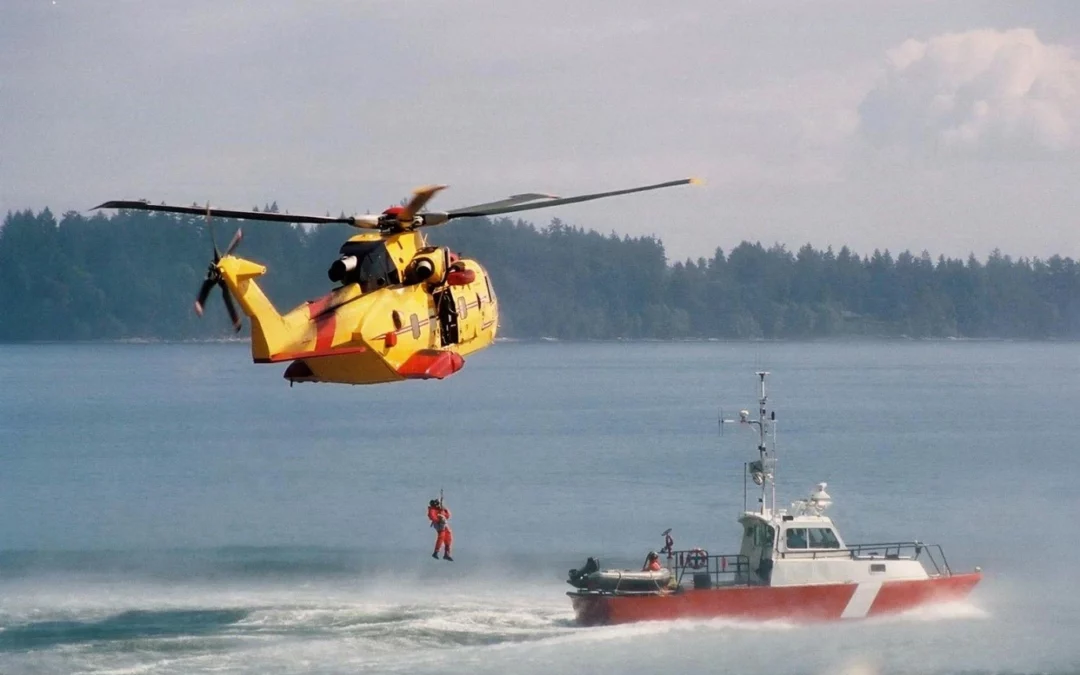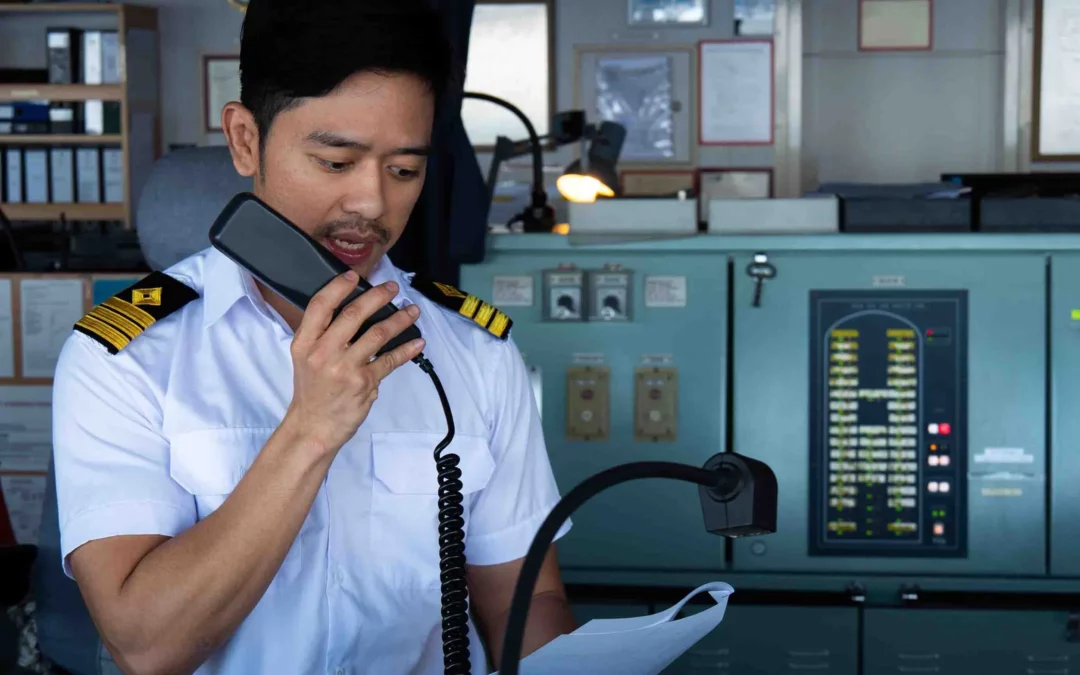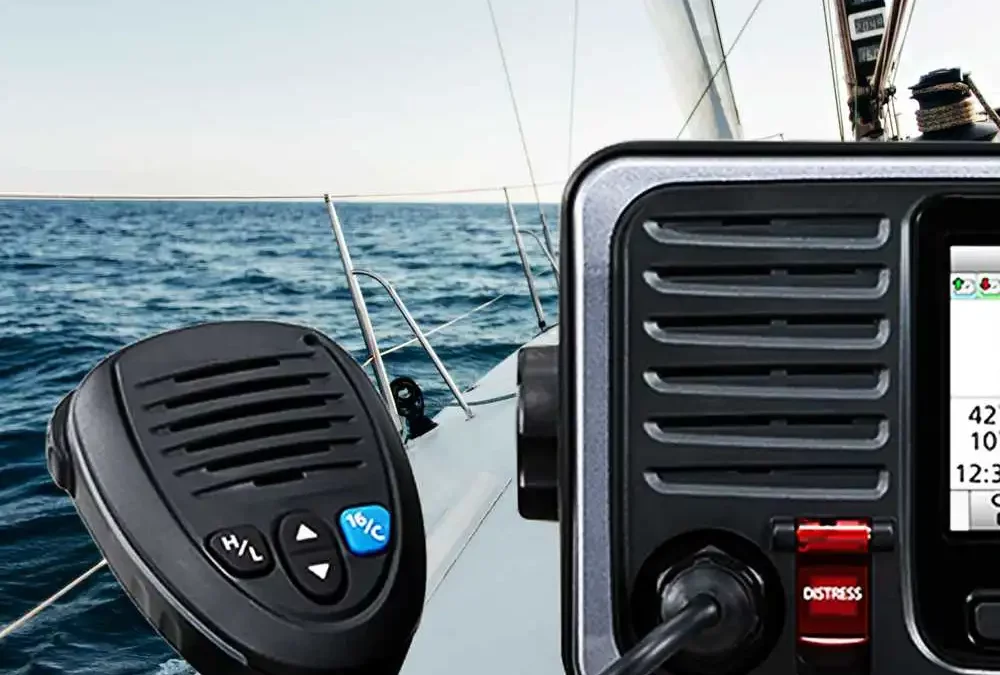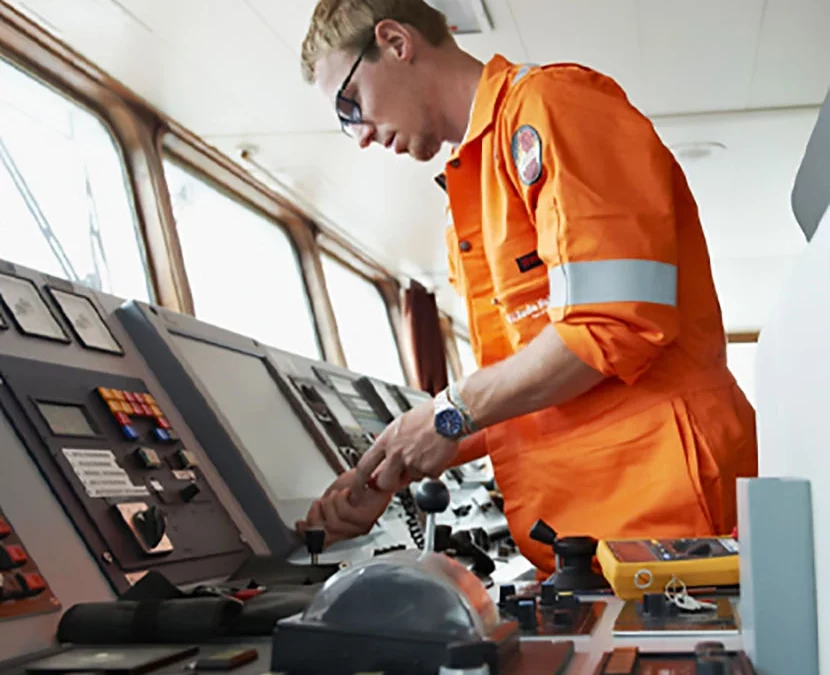
by Barani Chettiar | Apr 25, 2024 | Uncategorized
Importance of Communication in Search and Rescue
In the vast expanse of the open sea, where unpredictability is the norm, effective communication plays a pivotal role in search and rescue operations. Whether responding to distress calls, coordinating efforts, or ensuring the safety of those in peril, communication is the linchpin of successful search and rescue missions.
How Marine Radios Aid in Distress Calls
Marine radios serve as the primary means for vessels to send distress signals in emergency situations. Distress calls, often initiated using Digital Selective Calling (DSC) features, transmit crucial information, including vessel identification, location, and the nature of the emergency. This rapid and standardized method of communication ensures that distress signals are swiftly and accurately received by nearby vessels and maritime authorities, initiating the necessary response mechanisms.
Coordination with Emergency Responders
Effective coordination with emergency responders is paramount in search and rescue operations. Marine radios enable real-time communication between distressed vessels and response teams, facilitating the exchange of critical information. Emergency responders can provide guidance, coordinate rescue efforts, and convey vital instructions to ensure the safety of those in distress.
Range and Reliability of Marine Radios
The range and reliability of marine radios are critical factors in search and rescue operations. Very High-Frequency (VHF) radios, commonly used in the maritime industry, offer a balance between sufficient range and clarity for distress communication. The line-of-sight nature of VHF signals is advantageous in coastal and near-shore environments, where search and rescue operations often occur.
Advancements in Radio Technology
Advancements in radio technology have significantly enhanced the capabilities of marine radios in search and rescue scenarios. Global Maritime Distress and Safety System (GMDSS) advancements integrate satellite communication, providing global coverage and ensuring that distress signals reach emergency responders even in remote or international waters. Additionally, innovations like Automatic Identification System (AIS) further enhance vessel tracking, aiding in the quick location and response to distress situations.
Training Requirements for Effective Radio Use
While technology plays a crucial role, the effectiveness of marine radios in search and rescue operations also depends on the competence of the users. Proper training is essential to ensure that operators understand radio protocols, emergency procedures, and the use of advanced features like DSC. Training programs focus on enhancing the proficiency of maritime professionals in utilizing radio equipment effectively during critical situations.
Conclusion: Marine Radios Crucial for Saving Lives
In conclusion, the role of marine radios in search and rescue operations cannot be overstated. The importance of communication in distress situations, coupled with the capabilities of marine radios to aid in distress calls, coordinate with emergency responders, and provide reliable communication, underscores their crucial role in saving lives at sea. The range and advancements in technology further expand the reach and effectiveness of marine radios in diverse maritime environments.
While the technological capabilities continue to evolve, emphasizing the need for ongoing training to enhance operator competence remains paramount. As vessels traverse the open waters, facing the inherent risks of the maritime environment, the reliability and efficiency of marine radios stand as a beacon of hope in times of distress. In the realm of search and rescue, where every moment counts, marine radios emerge as indispensable tools, embodying the commitment to safety, communication, and the preservation of human life on the high seas.

by Barani Chettiar | Apr 24, 2024 | Uncategorized
Introduction: Importance of Radio Regulations in the Marine Industry
In the vast expanse of the commercial marine industry, where safety, communication, and coordination are paramount, adhering to radio regulations is a non-negotiable aspect of operational success. Radio regulations establish a framework for reliable communication, ensuring vessels operate safely and efficiently in the dynamic and often challenging maritime environment. In this article, we explore the nuances of navigating radio regulations and the critical importance of compliance in the commercial marine industry.
Overview of Radio Regulations: Global vs. Regional Standards
Radio regulations in the commercial marine industry are a combination of global and regional standards. While international agreements, such as those set by the International Telecommunication Union (ITU), provide a global framework, individual countries or regions may have additional regulations to address specific concerns. These regulations cover a spectrum of aspects, from frequency allocations and licensing requirements to equipment standards and emergency communication protocols.
Key Compliance Requirements: Licensing, Equipment Standards, Monitoring
Compliance in the commercial marine industry involves meeting various key requirements:
- Licensing: Operators must obtain valid licenses to operate radio equipment. These licenses often require demonstrating proficiency in operating the equipment and understanding communication protocols.
- Equipment Standards: Vessels must use radio equipment that meets specified standards to ensure reliability and compatibility. These standards cover everything from the type of radio used to the technical specifications of the equipment.
- Monitoring: Compliance includes regular monitoring of radio communications to ensure adherence to regulations. This involves checking for proper frequency usage, verifying licenses, and ensuring that emergency communication protocols are followed.
Challenges in Compliance: Complexity, Changing Regulations, Enforcement
While compliance is essential, several challenges exist in navigating radio regulations in the commercial marine industry:
- Complexity: The sheer complexity of regulations, encompassing both global and regional standards, can pose challenges for operators and regulatory authorities alike.
- Changing Regulations: The maritime landscape is dynamic, with regulations evolving to address emerging challenges. Keeping abreast of these changes and ensuring compliance can be demanding.
- Enforcement: Enforcement of regulations is a significant challenge, especially in international waters. Coordination among different maritime authorities is crucial for effective enforcement.
Best Practices for Compliance: Regular Training, Documentation, Communication
Effective compliance requires the adoption of best practices:
- Regular Training: Continuous training ensures that operators are aware of the latest regulations, equipment usage guidelines, and emergency communication protocols.
- Documentation: Maintaining accurate and up-to-date documentation, including licenses, equipment certifications, and communication logs, is essential for proving compliance.
- Communication: Establishing clear communication channels within and between vessels, as well as with regulatory authorities, fosters a culture of compliance and enhances safety.
Technology Solutions for Compliance: SDRs, Automation Tools
Technology plays a crucial role in addressing compliance challenges in the commercial marine industry:
- Software-Defined Radios (SDRs): SDRs provide flexibility in adapting to changing frequency requirements and standards. Their programmable nature allows for efficient compliance with evolving regulations.
- Automation Tools: Automated monitoring tools can assist in real-time surveillance of radio communications, helping identify and address compliance issues promptly.
Conclusion: Emphasize Importance of Compliance for Safety
In conclusion, navigating radio regulations and ensuring compliance in the commercial marine industry is a multifaceted challenge with far-reaching implications for safety and operational efficiency. Striking a balance between global and regional standards, understanding key compliance requirements, and addressing challenges through best practices and technology solutions are crucial for success. Compliance isn’t merely a regulatory obligation; it is a fundamental pillar supporting the safety of vessels, crew members, and the marine environment. As the commercial marine industry continues to evolve, embracing a proactive approach to radio regulations is not just a matter of adherence but an investment in the safety and success of maritime operations on a global scale.

by Barani Chettiar | Apr 23, 2024 | Uncategorized
Licensing Requirements: Legal Obligations for Operators
Marine radio operators are subject to specific licensing requirements, mandated by maritime authorities to uphold legal and safety standards. Obtaining a valid radio operator’s license is a legal obligation for individuals responsible for operating marine communication equipment. These licenses are issued based on demonstrated knowledge and competence, ensuring that operators possess the necessary skills to navigate the complexities of maritime communication.
Safety and Emergency Communication: Critical During Distress Situations
In the unpredictable environment of the open sea, where emergencies can arise suddenly, the proficiency of marine radio operators becomes paramount. Properly licensed operators are trained to handle distress situations, transmitting accurate and timely distress signals using internationally recognized distress frequencies. Their expertise in emergency communication contributes significantly to the efficiency of search and rescue operations, ultimately enhancing the safety of vessels and their crews.
Quality Assurance: Ensuring Effective Communication on the Water
Quality assurance in maritime communication is a linchpin of safe and efficient operations. Licensed marine radio operators undergo rigorous training and examinations to ensure that they can operate communication equipment effectively. This proficiency extends to using the appropriate channels, understanding radio protocols, and maintaining clear and concise communication. Properly licensed operators play a crucial role in preventing communication breakdowns, fostering reliable communication networks on the water.
Professionalism and Competence: Enhancing Credibility and Reliability
Professionalism is a hallmark of competent marine radio operators. Licensing and certification not only attest to an individual’s technical proficiency but also reflect their commitment to upholding ethical standards and adhering to industry best practices. This professionalism instills confidence in vessel owners, crew members, and maritime authorities, ensuring that communication tasks are entrusted to individuals who possess the requisite skills and dedication to their roles.
Training and Education: Importance of Ongoing Learning
The maritime industry is dynamic, with advancements in technology and changes in regulations occurring regularly. Proper licensing and certification emphasize the importance of ongoing learning for marine radio operators. Continuous training ensures that operators stay abreast of technological developments, maintain familiarity with updated communication protocols, and adapt to changes in the maritime landscape. This commitment to education enhances their ability to navigate the evolving challenges of maritime communication effectively.
Conclusion: Vital Role in Maritime Safety Operations
In conclusion, the importance of proper licensing and certification for marine radio operators cannot be overstated. These individuals serve as the backbone of communication in the maritime industry, ensuring the safety, coordination, and success of vessels at sea. Licensing requirements establish legal obligations, setting a standard for professionalism, competence, and adherence to safety protocols. Properly licensed operators contribute to quality assurance, fostering reliable communication networks and preventing breakdowns that could jeopardize maritime operations. Their commitment to ongoing training and education reflects a dedication to staying at the forefront of industry advancements, ultimately playing a vital role in maritime safety operations. As vessels continue to navigate the challenges of the open sea, licensed and certified marine radio operators stand as guardians of effective communication, promoting safety and efficiency on the water.

by Barani Chettiar | Apr 22, 2024 | Uncategorized
Importance of Reliable Marine Radios
In the dynamic and challenging world of commercial marine operations, reliable communication is not just a convenience – it’s a necessity. The open seas demand a robust and efficient means of communication to ensure the safety, coordination, and overall effectiveness of commercial vessels. In this article, we will explore the critical features to look for in marine radios designed for commercial use and delve into the importance of these features in various scenarios.
Overview of Commercial Use Scenarios
Commercial marine operations encompass a broad spectrum of activities, including shipping, fishing, offshore drilling, and more. These operations often take place in diverse and unpredictable environments, from calm coastal waters to the rough expanses of the open sea. Effective communication is vital for tasks such as coordinating shipping routes, managing fishing operations, and ensuring the safety of crew members. As such, the marine radios used in these scenarios must meet specific requirements to withstand the challenges posed by the marine environment.
Durability and Water Resistance: Impact of Harsh Marine Environments
Commercial vessels face constant exposure to harsh marine elements, including saltwater, humidity, and varying weather conditions. Durability and water resistance are paramount features in marine radios for commercial use. A rugged and waterproof design ensures that the radios can withstand splashes, heavy rain, and even immersion in water, providing durability in the face of the demanding marine environment.
Communication Range and Clarity: Essential for Long-Distance Communication
Commercial vessels often operate over long distances, requiring marine radios with a substantial communication range. VHF (Very High-Frequency) radios are commonly used for short-range communication, while SSB (Single Sideband) radios are essential for long-distance transmissions. Additionally, clear communication is critical, especially in noisy conditions prevalent in marine environments. Features that enhance clarity, such as noise-canceling microphones and advanced signal processing, ensure that messages are heard and understood even amid the roar of engines and crashing waves.
Emergency Features and Compliance: Emergency Alerts, DSC Capabilities, Regulatory Requirements
In the unpredictable realm of the open sea, emergency situations can arise unexpectedly. Marine radios for commercial use must be equipped with features to handle emergencies effectively. This includes:
- Emergency Alerts: Instantaneous broadcasting of distress signals to nearby vessels and maritime authorities.
- Digital Selective Calling (DSC) Capabilities: The ability to send and receive pre-defined digital messages, facilitating automated distress alerts and communication.
- Compliance with Regulatory Requirements: Meeting international regulations and standards set by organizations like the International Maritime Organization (IMO) ensures that commercial vessels remain in compliance with safety protocols.
Compatibility with Other Equipment: Integration with Navigation Systems, Intercoms, etc.
Seamless integration with other onboard equipment is another crucial feature for marine radios in commercial use. These radios should be compatible with navigation systems, intercoms, and other communication tools to enable a cohesive and interconnected communication network on the vessel. This integration enhances operational efficiency and coordination, contributing to the overall effectiveness of commercial marine activities.
Battery Life and Power Source Options
For extended journeys at sea, a reliable power source is essential. Marine radios designed for commercial use should have a sufficient battery life to last through long shifts or voyages. Additionally, having multiple power source options, such as rechargeable batteries and connections to the vessel’s power supply, ensures that communication remains uninterrupted.
Conclusion: Endorsement of Critical Features for Commercial Use
In conclusion, choosing the right marine radios for commercial use requires careful consideration of specific features tailored to the demands of the marine environment. The durability and water resistance of the radios, along with their communication range, clarity, and emergency features, are pivotal in ensuring the safety and efficiency of commercial maritime operations. Compatibility with other equipment and a reliable power source further contribute to the overall effectiveness of communication systems on board. As commercial vessels navigate the vast and unpredictable seas, the endorsement of these critical features becomes a testament to the commitment to safety, reliability, and success in the challenging world of commercial marine operations.

by Barani Chettiar | Apr 20, 2024 | Uncategorized
Importance of Marine Radios
Marine radios are the heartbeat of communication on the water, connecting vessels, ensuring safety, and facilitating efficient operations. Whether used for navigation, coordination, or emergency response, the reliability of marine radios is paramount. However, like any technology, they can encounter issues that hinder their performance. In this article, we’ll explore tips for troubleshooting common marine radio issues to ensure effective communication on the water.
Understanding Common Radio Issues
Before diving into troubleshooting, it’s essential to understand the common issues that marine radios may encounter:
- Power Supply Problems: Issues with power sources and connections.
- Antenna-related Issues: Damaged or poorly maintained antennas affecting signal strength.
- Audio Problems: Challenges with receiving or transmitting clear audio.
- Transmission and Reception Issues: Difficulty in establishing communication with other vessels or stations.
Checking Power Supply and Connections
A common culprit for marine radio issues is power-related problems. To troubleshoot:
- Check Power Source: Ensure the radio is connected to a reliable power source. Verify battery status or power connection to the vessel.
- Inspect Wiring: Examine power cables and connections for damage. Tighten loose connections and replace faulty cables.
- Fuse Inspection: Verify the condition of the fuse. A blown fuse could be a sign of an underlying issue.
Antenna Inspection and Maintenance
The antenna plays a crucial role in signal transmission and reception. Issues with the antenna can result in poor communication:
- Visual Inspection: Look for physical damage, corrosion, or loose connections in the antenna.
- Clean Connections: Ensure antenna connections are clean and free of corrosion. Clean with a corrosion inhibitor if necessary.
- Antenna Height: Verify the antenna’s height and positioning for optimal signal reception.
- Replace Damaged Antennas: If damage is evident, consider replacing the antenna to restore signal strength.
Troubleshooting Audio Problems
Clear audio is essential for effective communication. If you encounter audio issues:
- Volume Check: Ensure the volume is set to an audible level.
- External Interference: Identify and eliminate sources of interference, such as electronic devices or engine noise.
- Microphone Inspection: Check the microphone for damage or loose connections. Replace or repair if needed.
- External Speaker Verification: If using an external speaker, ensure it is functional and connected properly.
Addressing Transmission and Reception Issues
If you’re experiencing challenges in transmitting or receiving signals:
- Check Frequency Settings: Confirm that the radio is tuned to the correct frequency for the intended communication.
- DSC (Digital Selective Calling) Function: Ensure the DSC function is activated and configured correctly for distress calls.
- Transmission Power: Verify that the radio is transmitting at the appropriate power level.
- Weather Conditions: Consider atmospheric conditions that might affect signal propagation, especially in HF (High-Frequency) bands.
Effective Communication on the Water
Troubleshooting common marine radio issues is crucial for maintaining effective communication on the water. Regular inspection, maintenance, and prompt resolution of issues contribute to the reliability and performance of marine radios. In the maritime environment, where conditions can change rapidly, having a well-functioning radio is not just a convenience but a safety imperative. By understanding and addressing common issues related to power, antennas, audio, and transmission, mariners can ensure that their marine radios remain a dependable tool for seamless communication, navigation, and coordination on the vast expanse of the open seas.





